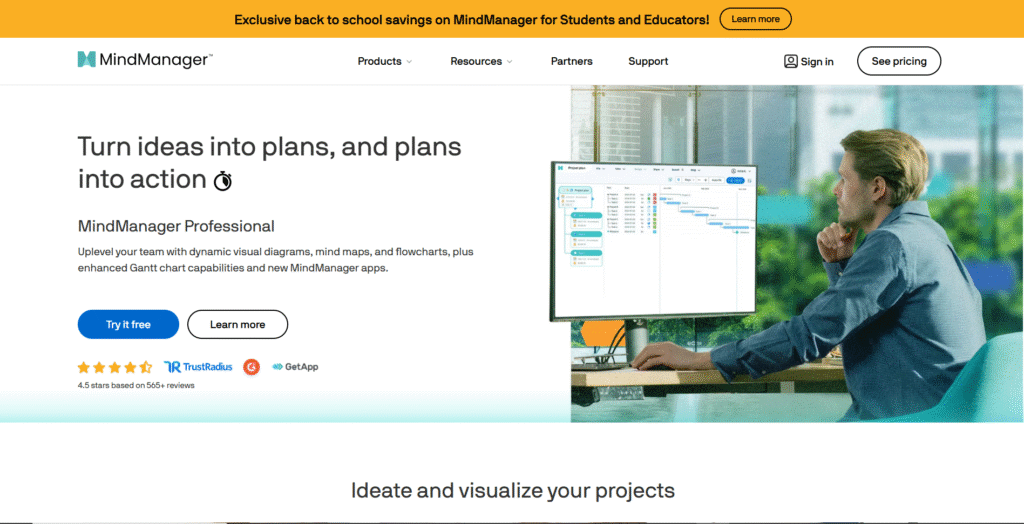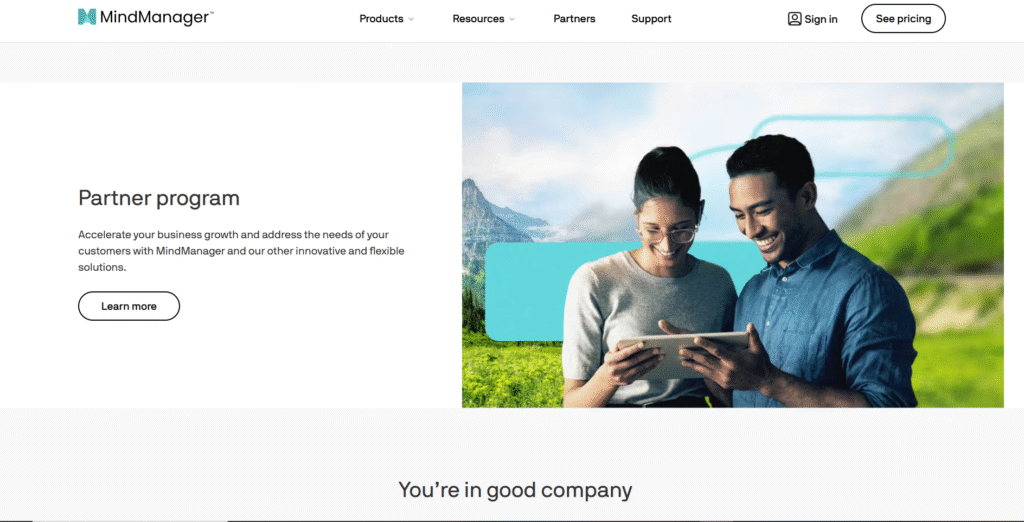Introduction
In today’s fast-paced business environment, the ability to organize complex information, streamline workflows, and foster collaboration is more important than ever. This is where MindManager (https://www.mindmanager.com/) stands out as a powerful tool for individuals, teams, and enterprises. Known for its visual productivity features, MindManager helps users transform scattered ideas into structured, actionable plans.
In this 2025 review, we’ll explore its key features, usability, integrations, pricing, strengths, and weaknesses while also comparing it to similar platforms. Whether you’re a student, project manager, or executive, this review will give you a clear understanding of whether MindManager is worth investing in this year.

What is MindManager?
MindManager is a visual productivity and mind mapping software that enables users to capture, organize, and share ideas in a dynamic, interactive format. Originally designed for simple mind maps, it has evolved into a comprehensive platform that supports:
- Project planning & task management
- Brainstorming & idea organization
- Process mapping & workflow visualization
- Strategic planning & knowledge sharing
Its intuitive drag-and-drop interface allows users to build maps, diagrams, and flowcharts that make even the most complex data more digestible.
Key Features of MindManager (2025)
- Advanced Mind Mapping
- Create visual maps that structure ideas and link them with related tasks, notes, or resources.
- Color coding, icons, and tags help categorize information efficiently.
- Task & Project Management
- Integrated Gantt charts for project timelines.
- Resource allocation and workload balancing tools.
- Task prioritization and progress tracking.
- Workflow Visualization
- Build flowcharts, concept maps, and swimlane diagrams.
- Map out decision trees or organizational hierarchies.
- Simplifies business process modeling.
- Collaboration Tools
- Co-editing allows teams to work on maps in real-time.
- Cloud storage integrations (OneDrive, SharePoint, Google Drive).
- Export maps to MS Office, PDF, or images for easy sharing.
- Information Management
- Central dashboard to consolidate data.
- Attach files, links, and notes directly to map topics.
- Search and filter options to navigate complex projects.
- Integration & Connectivity
- Works with Microsoft Teams, Outlook, Excel, and project management platforms.
- Import/export compatibility with other mind mapping software.
- Cross-Platform Support
- Available on Windows, Mac, and mobile devices.
- Cloud synchronization ensures access from anywhere.

User Experience
MindManager has a clean, professional interface that feels familiar to Microsoft Office users. The ribbon-style menu makes navigation easy, while drag-and-drop functionality keeps mind mapping intuitive.
Users report that the platform excels in handling large and complex maps without lag, making it suitable for enterprise-level projects. The learning curve is moderate—new users can grasp the basics quickly, but advanced features like automation and project reporting require some practice.
Who Should Use MindManager?
- Students & Educators: For brainstorming, note-taking, and structuring essays or research.
- Project Managers: For Gantt charts, task dependencies, and resource management.
- Business Leaders: For strategic planning, organizational mapping, and decision-making.
- Creative Teams: For idea generation, innovation workshops, and campaign planning.
Benefits of Using MindManager
- Enhanced Productivity – Breaks down complex projects into manageable steps.
- Better Collaboration – Real-time co-editing and cloud integrations improve teamwork.
- Clarity of Information – Visual maps make it easier to absorb and recall information.
- Scalability – Suitable for small personal projects and large corporate workflows alike.
- Flexibility – Supports multiple visualization formats (maps, timelines, Kanban boards).
Drawbacks
- Pricing may be high for students and freelancers compared to competitors.
- Learning curve for advanced tools might discourage beginners.
- Limited mobile features compared to desktop versions.
Pricing (2025 Update)
MindManager offers subscription-based pricing with options for individuals, teams, and enterprises:
- Individual Plan: Around $169 per year.
- Team/Enterprise Plans: Custom pricing with additional collaboration and admin controls.
- One-time Perpetual License: Available for Windows users who prefer a single payment.
They also offer a 30-day free trial, allowing users to test its full feature set before committing.
How Does MindManager Compare to Alternatives?
- XMind – Cheaper, great for casual users, but lacks MindManager’s enterprise project features.
- Miro – Strong collaboration and whiteboarding features but less structured project tracking.
- Lucidchart – Excellent for diagrams and flowcharts, but weaker on mind mapping flexibility.
MindManager strikes a balance between visual creativity and structured project management, making it one of the most versatile tools in the category.

Final Verdict
MindManager continues to be a top-tier choice for visual productivity in 2025. Its blend of mind mapping, project management, and workflow visualization tools makes it invaluable for professionals and organizations seeking clarity in complex projects.
While pricing may be a barrier for casual users, the software’s enterprise-grade features, integrations, and scalability more than justify the cost for serious users. If you need a tool that goes beyond brainstorming and supports full-scale project execution, MindManager is hard to beat.
✅ Visit the official site: https://www.mindmanager.com/

